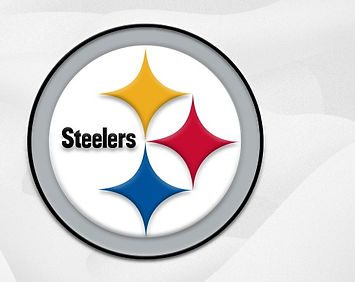KMH Integration Keeps Pittsburgh Steelers Moving Forward

Challenge
KMH is lead integrator on an ongoing multi-phase project to deploy studios and production spaces, TV/radio operations and file-based workflow with MAM system at both South Side and Heinz Field
Solution
- KMH managed the team’s entire production environment upgrade
- Evaluated media storage capabilities, ultimately providing a new Media Asset Management (MAM) system.
- Organized and streamlined the integrated workflow between the stadium and the production headquarters at South Side.
Results
- KMH has allowed both locations to share content vastly improving efficiencies.
- Updated radio and TV broadcast environment including substandard audio and acoustics, resolved operational bottlenecks due to limited space constraints, updated signal formats and lack of efficient production workflows.
- Delivered a multi-studio and control room environment capable of supporting production with the ability to grow and expand for future demands.
KMH Integration is working with the Pittsburgh Steelers to deploy a new file-based production workflow and media asset management (MAM) system. The MAM roll-out is the latest phase of KMH’s multi-year consulting, design, and technology installation partnership with the Steeler's front office management, IT, and engineering teams.
The new MAM solution will help the Steelers unify media assets, automate existing and new processes and streamline file transfers between Heinz Field and the UPMC Rooney Sports Complex. This “South Side” facility houses the Steelers headquarters, marketing and promotions, front office management, and an indoor training center shared by the Steelers and the University of Pittsburgh football team.
KMH is installing a CatDV asset management system, including an enterprise server, web-based client interfaces, and automation software. The system integrator is also conducting group and one-on-one user training to cover ingesting assets into the DAM, creating low-resolution proxies, tagging assets with metadata, searching based on metadata, and sending files to the archive.
File-based and Future-proofed
The Steelers’ new file-based capabilities build on the work KMH has completed over the last three years, starting with a plan to assess, evaluate and re-configure the team’s existing production spaces at the South Side facility.
“The Steeler's production management had a definite vision for this facility as a long-term foundation for their creative and production capabilities,” said Kevin Henneman, president of KMH Integration. “We’ve been working to support their rapidly growing digital content platform, improve acoustic qualities, and build a network infrastructure to handle future growth.”
The Steelers’ content and production teams were previously all sharing one open, multipurpose area in the UPMC facility, creating a challenging work environment in terms of acoustics, lighting, and basic organization. This area also served as a combined radio and television studio, causing a unique conflict for each operation.
KMH first upgraded the overall area’s infrastructure for power, air conditioning, acoustics, and lighting. Then, to give each team its own creative space and separate radio and TV, Henneman and his team designed a system of operable hard walls. These sectioned panels can be operated manually or by remote control to convert one large space into several smaller ones quickly and easily.
In the UPMC facility, when each wall is fully deployed the formerly large common area converts into four individual production areas: a control room, a larger TV studio, and two smaller studios.
“A room layout may be set up for a morning shoot,” Henneman said, “and then later that same day quickly converted into separate studio spaces allowing multiple crews, TV affiliate production, or shows to simultaneously produce content. Or, if they need to get more thematic shots requiring a deeper focal length, they can open all the walls, push the cameras back and shoot the entire space. They now have that flexibility.”
An Acoustical Perfect Storm
KMH worked with several long-time strategic partners including Acoustic Distinctions to create new sound treatments and Creative Dimensions on a new set design.
The acoustic redesign presented its own set of system challenges. Within the UMPC facility, the production spaces are on the other side of a wall separating it from the practice facility field, with a portion of that wall made of glass to give visiting guests a special viewing area to watch practices. In addition to the glass being a poor acoustic surface, the space is also adjacent to the University of Pittsburgh’s weight room, with loud music often pouring through the wall.
A third challenge was the noise and vibrations from a freight train passing through within 100 yards of the facility twice a day; “not the sort of ‘two-a-days’ usually encountered in football environments,” Henneman said.
Acoustic Distinctions worked with KMH and the project’s architect, MEP consultant, electricians, and designers to implement the right fixes.
“There were several acoustical perfect storms occurring at once,” said Henneman. “We did an analysis of the Pitt weight room to evaluate wall thickness and construction. Then it was a simple matter of taking the wall-mounted speakers, which were creating a coupling of acoustic energy through the wall, and hanging them from a bracket. That drastically reduced the amount of energy being pushed into the Steelers' control room area. When people heard the final result, they were blown away. They couldn't believe it was the same space.”
KMH Integration will continue working with the Steelers beyond the 2021 season on system upgrades and ongoing consultation, with plans including further build-outs of the radio and TV operations.
